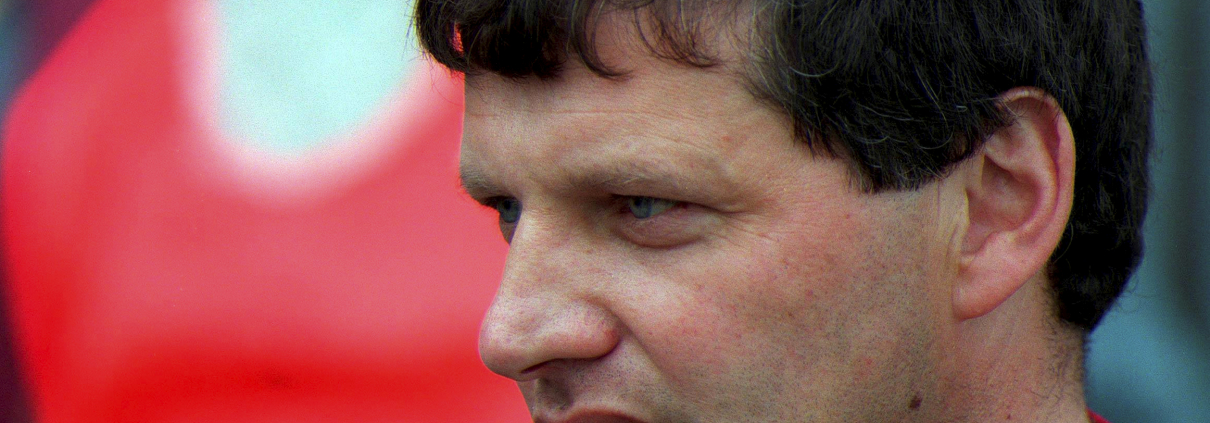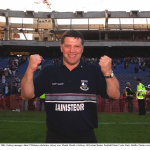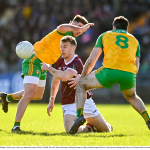John O’Mahony always kept the faith
By John Harrington
The reaction to John O’Mahony’s sad and untimely passing last Saturday has underscored two truths – that he was a very decent man, and one of the most innovative managers in the history of Gaelic football.
I had the good fortune of getting to know ‘Johnno’ in 2015 when I worked with him on his autobiography ‘Keeping the Faith’.
It was a hugely enjoyable process from start to finish because Johnno was always such personable company and made the job of ghost-writing his memoir an easy one because he had such a vivid recall of his life in football.
A common compliment from those who played under him is that Johnno was meticulous in his approach to management, and he brought the same level of organisation to writing his book.
For a period of his time as Galway manager he recorded his thoughts on his way to and from training on a Dictaphone, and went so far as to have these transcribed into a document that ran to hundreds of thousands of words. Pure manna for the ghost-writer.
It’s easy to make the argument that O’Mahony is one of the most influential managers in the history of the game because he pioneered many of the staples that are now taken for granted, from video analysis to sports psychology to dietary plans.
When he was appointed Mayo U-21 team manager at the age of 30 in 1983, he spent £1,400 of his own money on a top of the range video camera and recorder, long before most senior inter-county teams even thought of using video analysis.
Johnno even went so far as to get one of his students in St. Nathy’s, Pat Coen, to put a commentary over the video recordings, and his well-drilled U21 team went on to win the All-Ireland that year.
When he was appointed Mayo senior manager at the end of 1987 he made a point of ensuring the players had the fuel they needed to perform to their best.
His wife, Gerardine, always a huge support to Johnno, was a Home Economics teacher, and put together dietary plans for all the players and made healthy smoothies that she brought to training sessions along with bags of whole fruit.
Whenever the team stayed overnight anywhere for a match or a training camp, Ger would get in touch with the hotel to make sure they could provide players with healthy food.
The players were brought to Thomond College in Limerick at the start of every year for fitness testing where everything was tested – body fat, speed, and endurance – and then they’d return a few months later to measure what progress had been made. Par for the course now, but revolutionary in the 1980s.
The nature of Mayo’s defeat to Meath in the 1988 All-Ireland semi-final convinced O’Mahony that his team was mentally weak so he made it a priority to strengthen their minds by bringing in Bill Cogan as a performance coach at a time when there was no such thing as sports psychology in Gaelic games.
He also brought in Mick Doyle, who had coached Ireland’s Triple Crown winning team of 1985, to give a speech at a team-building weekend on what it takes to win at the highest level.
Mayo fell agonisingly short of winning the All-Ireland Final in 1989, but it wasn’t for a lack of self-belief they failed to get over the line that day against hot favourites Cork.
Mayo manager John O’Mahony pictured after defeat to Cork in the 1989 All-Ireland SFC Final.
His ability to convince players they should set no limits on their ambition was even more apparent as Leitrim manager.
Bill Cogan was a big part of that set-up too, as Johnno set about demolishing the mindset that Leitrim should simply accept being the poor relations of Connacht football.
He insisted on the team arriving for championship matches on a brand new team coach rather than the convoy of cars and clapped out mini-buses that had been the norm previously.
If the team were staying at a hotel he insisted on the Leitrim county board booking a good one. His motto was ‘Stay five star…Play five star’.
Before the 1994 Connacht Final against Mayo, Johnno arranged for a the team to eat a pre-match meal in a guest house only 500 yards from Hyde Park but which was quiet and secluded because it was on an old estate down a narrow lane surrounded by serene woodland.
His only concern was whether the top of the range Leitrim team-bus would fit through the narrow gateway, so, Johnno being Johnno, he drove to Roscommon a week before the final and measured the gateway himself. There was an inch to spare.
On the day of the match the bus was decked out in Leitrim colours and the Leitrim players were smartly dressed in slacks and polo-shirts. 40 years ago the best a county team might hope for would be matching track-suits, but Johnno’s attitude was that if Leitrim were ever going to be respected they had to do things better than anyone else.
Leitrim, of course, famously won the ’94 Connacht Final and the team was driven through a mobbed Carrick-on-Shannon that evening on an open-top bus that Johnno had booked himself, so confident was he that his team would get the job done.
Leitrim manager John O’Mahony celebrates after the 1994 Bank of Ireland Connacht Senior Football Championship Final match between Leitrim and Mayo at Dr Hyde Park in Roscommon. Photo by Ray McManus/Sportsfile.
Those who worked under Johnno will attest to his man-management skills, and they arguably found their greatest expression with the Galway footballers he led to two All-Ireland titles in 1998 and 2001.
That Galway team had some very strong personalities as well as talented footballers, but Johnno had a knack for figuring out what made them all tick as individuals and so got them pulling together in the same direction as a team.
As well as making the most of the hand he was dealt himself, Johnno also like to sneak a peak at the cards the opposition was holding as much as he possibly could.
It’s quite poignant he should pass a week after his good friend Tommie Gorman, because the famed RTE journalist spent countless hours doing video analysis for Johnno during his stints as manager with Mayo, Leitrim, and Galway.
Johnno loved the intrigue of pitting his wits against opposition managers, and had a handful of ‘spies’ who’d watch opposition teams in training and challenge matches and feed him back invaluable intel.
Kildare did their best to keep it under wraps when Glen Ryan injured his thigh while out golfing before the 1998 All-Ireland Final against Galway, but Johnno had such good contacts in Kildare he reckoned he knew about Ryan’s woes before he was even off the golf course.
As well as keeping a close eye on the opposition, Johnno enjoyed putting out a bit of disinformation about his own team if he felt it would serve them well.
Before that 1998 All-Ireland Final he let it be known that Galway would be staying at the Burlington Hotel and even had the Hotel erect a big sign welcoming the Galway team.
So while supporters and media congregated at the Burlington the day before and morning of the All-Ireland Final, in reality the Galway team were staying down the road at the Berkley Court Hotel which was an oasis of calm.
As meticulous as he was in all aspects of management, Johnno knew that ultimately it always came down to the players so you had to empower them to take leadership themselves rather than be too prescriptive.
Galway manager John O’Mahony kisses the Sam Maguire Cup after the 1998 Bank of Ireland All-Ireland Senior Football Championship Final match between Kildare and Galway at Croke Park in Dublin. Photo by David Maher/Sportsfile
When Galway trailed Kildare at half-time in that 1998 All-Ireland Final he took them to warm-up room and simply told them it was the biggest day of their lives so it should be their best one too.
He then walked out of the room and left the players to talk it out, and the rest is history as a rampant Galway blew Kildare away in the second-half.
Throughout his management career Johnno regarded himself as a facilitator whose role it was to give everything of himself to help his players be the best they could be.
He had a refreshing lack of ego and he never made it about himself.
In the closing minutes of that 1998 All-Ireland Final when it was apparent that Galway would win the game he did allow himself a moment of indulgence though which you’d be glad of now.
“I enjoyed a couple of minutes of pure bliss on the sideline,” he recalled. “I had been at all the great Kerry v Dublin matches of the 1970s when Mick O’Dwyer and Kevin Heffernan had pitted their wits against one another.
“In the closing minutes of those matches I always closely watched the manager who was about to win, and I tried to imagine how he felt in those moments. It was always my dream to experience that sensation for myself. Now, here it was happening for real.
“It was just heaven on earth. I’ll remember it to my dying day.”









